 |
|

|
 |
TABLE of CONTENTS
 |
2022 construction season: nearly 260 projects advance traffic safety, mobility and accessibility |
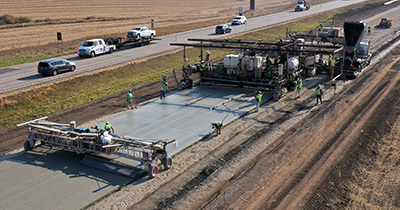
The two-year construction project along Hwy 52 between Zumbrota and Cannon Falls will wrap up the 2022 construction work this month and resume its final year of construction in spring of 2023. Drone photo by Rich Kemp |
By J.P. Gillach
During a 2022 road construction season in which several projects remained active into late November, supply chain challenges lingered and traffic levels mostly returned to pre-pandemic levels, MnDOT and its contractors and other partners advanced or completed 258 road and bridge projects.
“This year’s robust road construction season significantly improved Minnesota’s transportation system with new roads, bridges, safer intersections and improved accessibility for people who walk, bike or roll to their local destinations,” said Commissioner Nancy Daubenberger. “With traffic volumes back to pre-pandemic levels, we thank all Minnesotans for their patience with our road construction projects, and for slowing down in work zones to keep highway workers safe.”
Major projects completed in 2022
A few of the notable achievements during the 2022 construction season include completing:
- a four-year construction project that significantly improved Interstate 94 between Maple Grove and Clearwater
- intensive construction that improved I-94/I-35E near downtown St. Paul
- 12 miles of improvements on Hwy 36 between Little Canada and Stillwater
- nine redesigned intersections, including one roundabout, seven J-turns and one intersection with improved turn lanes along Hwy 71 in Bemidji
- resurfacing 13 miles of I-90 between the South Dakota border and Beaver Creek in southwest Minnesota
MnDOT and its partners also made significant progress on the first year of the final stretch of Hwy 14 expansion in southern Minnesota between Nicollet and New Ulm.
Other 2022 construction season highlights include:
Twin Cities
- I-94 and I-35E project in St. Paul – Completed construction that began in 2021 and included resurfacing, repairs to ramps and frontage roads, improved drainage and upgraded storm sewers, bridge improvements and improved pedestrian sidewalks.
- Hwy 77 Bloomington to Minneapolis – Resurfaced Hwy 77 between the Minnesota River in Bloomington and Lake Nokomis in Minneapolis, added center median barrier, upgraded pedestrian/bicycle accessibility at intersections and improved drainage.
- Hwy 10 Anoka – Completed first year of a multi-year project that will eliminate the traffic signals on Hwy 10 in Anoka, construct new interchanges, repair bridges, better connect sidewalks and trails, and improve connections to the highway and community.
Northern Minnesota (MnDOT Districts 1 and 2)
- Hwy 194 Hermantown – Completed intersection safety improvements at Hwy 53/Hwy 194 and a roundabout at Hwy 194/Midway Road, and resurfaced Hwy 194.
- I-35 Barnum – Resurfaced 6.5 miles of northbound I-35.
- Hwy 37 south of Iron Junction – Installed a new roundabout at Hwy 37/Saint Louis County Road 7.
- Hwy 71 Bemidji – Resurfaced Hwy 71 between Hwy 197 and Winter Sumac Road, constructed new roundabout at Hwy 71/Anne Street, plus safety improvements at eight other intersections.
- Hwy 75 and Hwy 175 in Hallock – Resurfaced and improved accessibility along both highways.
- Hwy 92 north of Zerkel – Resurfaced and widened shoulders on Hwy 92 between Clearwater County Road 35 and Hwy 200.
- Hwy 2 Fosston – Restriped to switch from a four-lane to a three-lane section. The three-lane restripe will be in place until the corridor is scheduled for reconstruction.
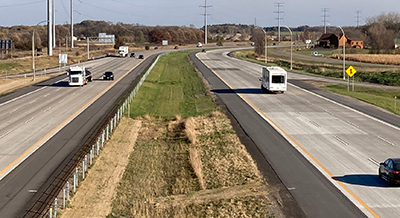
This portion of the I-94 project added a lane on I-94 in both directions between Monticello and Clearwater. Photo courtesy of District 3 |
Central Minnesota (MnDOT Districts 3 and 4)
- I-94 Maple Grove to Clearwater – Completed the final year of four years of construction between Maple Grove and Clearwater. In 2022, completed construction on six miles of I-94 between St. Michael and Albertville, 15 miles between Monticello and Clearwater, and the eastbound I-94 Enfield Rest Area.
- 169 Redefine Elk River – Completed first year of major construction on a multi-year project to convert three miles of Hwy 169 through Elk River to a freeway. 2022 construction included improvements at the Hwy 10/101/169 interchange, a new northbound bridge, and a new 197th Avenue bridge over Hwy 169.
- Hwy 23 Foley to Milaca – Resurfaced 13 miles and improved intersections, constructed a new roundabout in Foley, improved drainage infrastructure.
- Hwy 65/Hwy 23 Mora – Replaced the Hwy 65 (Hwy 23) bridge over the Snake River and installed multi-use trail along the west side of the road.
- Hwy 29 near Glenwood – Constructed new bridge on Hwy 29, spanning the railroad and Hwy 55, and new roundabout at Hwy 29/160th Street.
- Hwy 87 in Frazee – Reconstructed and resurfaced Hwy 87 in Frazee, replaced city utilities, improved pedestrian and bicycle access.
- Hwy 200 Mahnomen to Roy Lake – Widened shoulders along Hwy 200 between Mahnomen and Roy Lake, replaced bridge/culverts and improved pedestrian safety. Project resumes in Spring 2023.
Southeast Minnesota (MnDOT District 6)
- Hwy 52 Zumbrota to Cannon Falls – Completed second year of a three-year project.Crews reconstructed 6.5 miles of southbound Hwy 52, built a new interchange at Hwy 52 and Hwy 57/Goodhue County Road 8, and replaced the southbound Hwy 52 bridge over Hwy 60 east.
- Hwy 43 Winona – Constructed four new roundabouts between Hwy 61 and Sarnia Street in Winona, including the first two-lane roundabout in the area, replaced city water and sewer.
- Hwy 65, Albert Lea Main Street– Reconstructed Hwy 65 between Newton Avenue and the Shell Rock River Bridge, improved drainage to reduce flood events, repaved road from Shell Rock River Bridge to Sorenson Road, installed new “J-turn” intersections, improved pedestrian accessibility, installed new signal and lighting.

The project on Hwy 68 in District 8 constructed wider shoulders and replaced two culverts along the 11-mile stretch and replaced three culverts near Porter. Photo by Diana Heston |
Southwest Minnesota (MnDOT District 7 and District 8)
- I-90 South Dakota border to Beaver Creek – Resurfaced 13 miles of I-90 with concrete pavement overlay, reconstructed shoulders, repaired guardrail and improved drainage.
- Hwy 86 Lakefield – Reconstructed 1.3 miles through city of Lakefield, replaced or improved utilities, lighting, drainage and sidewalks.
- Hwy 263 Ceylon – Resurfaced between Ceylon and I-90, paved shoulders, added lighting, updated utilities, improved drainage and replaced guardrail.
- Hwy 212 in Glencoe – Constructed two reduced conflict intersections, installed permanent snow fence, improved pedestrian access and safety.
- Hwy 68 Minneota to Marshall – Widened shoulders and replaced two culverts along 11 miles of Hwy 68, replaced three culverts near Porter.
The complete list of current and future MnDOT construction projects, including plans and studies, can be found on the Minnesota state highway projects page of the agency website. |
 |
|

|
 |
TABLE of CONTENTS
 |
Daubenberger reappointed Commissioner of Transportation |
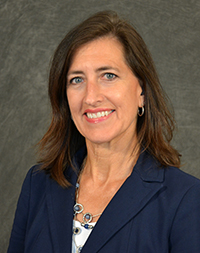
MnDOT Commissioner Nancy Daubenberger. Photo by Rich Kemp |
Gov. Tim Walz and Lt. Gov. Peggy Flanagan announced on Nov. 16 that MnDOT Commissioner Nancy Daubenberger would be reappointed, as part of the administration’s cabinet for the upcoming term. Daubenberger has served as the agency’s commissioner since March 2022.
Prior to taking on this role, she was MnDOT’s deputy commissioner and chief engineer for three years. She has also served as the assistant commissioner for Engineering Services and as the state bridge engineer, and worked in planning, project management and design roles for the MnDOT Bridge Office and Metro District. Before coming to MnDOT, she worked in consulting for about six years, in both bridge and road design.
“I am proud to accept this reappointment – it continues to be an honor to serve in this role and I’m very excited for all we can accomplish together in the years ahead,” Daubenberger said in an email to MnDOT employees. “We have work to do over the next four years to ensure current and future generations of Minnesotans have a safe, sustainable, efficient, equitable and environmentally conscious multimodal transportation system, that helps make Minnesota the best place to raise a family and build an economy that works for all Minnesotans. Each of you play a role in making that happen.”
Daubenberger joins 15 other current state agency commissioners who have also been reappointed. |
 |
|

|
 |
TABLE of CONTENTS
|
Healing and commemoration ceremony honors history at Mission Creek |
By Stephanie Christensen, District 1
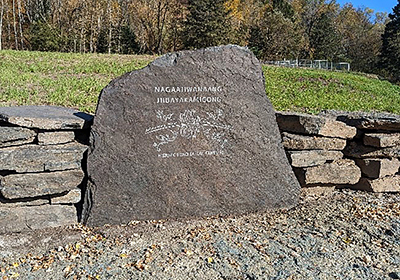
A newly carved stone marks the Fond du Lac Cemetery. Photo by Sam Geer, Urban Ecosystems |
On Sept. 30, the Fond du Lac band of Lake Superior Chippewa held a healing and commemoration ceremony at Chambers Grove Park in Duluth for the Nagaajiwanaang cemetery site located near Hwy 23 at Mission Creek.
In mid-May 2017, MnDOT crews disturbed the historic cemetery during construction to replace the Mission Creek Bridge and create a larger waterway. The agency placed the project on a permanent hold and began working in coordination with the Fond du Lac Band of Lake Superior Chippewa, Minnesota Indian Affairs Council and the Office of the State Archeologist to help respectfully recover burial related materials and restore the cemetery site.
The bulk of recovery work was completed by dedicated crew members who carefully sifted through massive piles of disturbed soil to recover burial related goods and artifacts. Leaders at the ceremonial event expressed tremendous gratitude for the workers and acknowledged the difficulties they endured.
“You have to understand what they went home with every day was powerful," said Tribal Chairman Kevin DuPuis. "What they had to deal with was powerful.”
After completing the sifting process, the crews returned the soils to the cemetery area and stabilized the central cemetery slope.
In late July 2022, Fond du Lac held a small, private ceremony to reinter recovered items.
The September event at Chambers Grove publicly celebrated the return of ancestors to the cemetery and additionally marked the substantial completion of landscape restoration efforts. The day included reflection, prayer, music and a celebratory feast. Speakers at the event also reflected on lessons learned and how things are being done differently today.
“As a result of this disturbance, MnDOT has increased efforts to train staff and coordinate with tribal partners on our projects so that we can move forward in a better way,” said Commissioner Nancy Daubenberger. “This was very much a learning experience for MnDOT and we now know that no matter how small or large the project might be, whatever the size or reach, we absolutely need to make sure we have a formal consultation with the tribe. We need to understand the history of the area and we need to make sure that protections are in place so this doesn’t happen again.”
Work to restore the landscape following the return of soils began in the spring 2022 and was conducted by Northland Constructors. Landscape restoration work included the rerouting of a small stream that feeds Mission Creek, along with building a retaining wall, planting new trees and shrubbery, and creating a walking path and markers that acknowledge the site’s history.
“Looking ahead, much will be done at Mission Creek with the Band,” said Daubenberger. “We will start a two-year maintenance period for the commemorative area and coordinate for the Fond du Lac Band to perform a cultural resources study of the area. And, to ensure adequate protection of the cemetery, MnDOT will transfer the land to the Band.”
Small amounts of work to finalize restoration will take place in the summer of 2023. A new project to realign Hwy 23 and reconstruct the Mission Creek bridge is slated to begin spring of 2024.
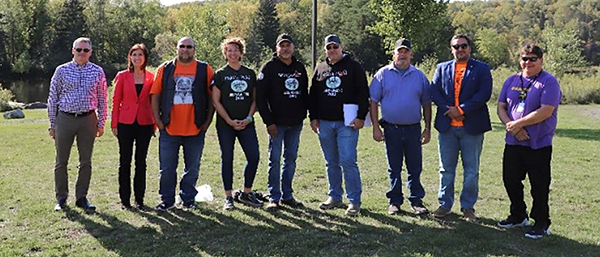
Dignitaries gather at Chambers Grove Healing and Commemoration event. Photo by Adrien Carretero |
|
 |
|

|
 |
TABLE of CONTENTS
|
Hwy 71 project wraps up in District 2 |

Before and after views of the new J-turn at Town Hall Road. Drone photos by Leslie Seitz
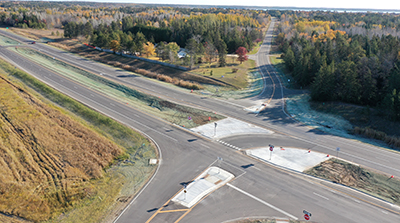
|
By Leslie Seitz, District 2
MnDOT has completed the Hwy 71 project in Bemidji. The $16.6 million project, which featured extensive public engagement, consisted of intersection improvements at eight locations between Hwy 197 and Winter Sumac Road, including a roundabout at Anne Street. Construction began May 16 and concluded on Oct. 7. Knife River was the construction contractor.
The highway needed long-term improvements to address intersection safety and aging infrastructure. From 2019 to 2020, MnDOT worked with a community panel to develop and evaluate options that would support the community’s vision for the corridor. The planning group included local business owners, residents, motorists, emergency services, and officials from the township, city and county.
Benefits of the project include a safer road and a smoother and longer-lasting driving surface, as well as intersection and pedestrian improvements to enhance safety for all users. Studies show an 86% decrease in fatal crashes at roundabouts and a 70% reduction in fatalities where J-turns are used.
Public engagement was a critical part of the project during all phases. District 2 communications staff led these efforts, which included:
- Pre-construction staging meetings with businesses along the corridor, along with staff from Sanford Health and regional emergency services
- A hybrid (in-person and online) public open house
- Weekly hybrid public meetings with project staff
- Weekly Gov Delivery email updates to project subscribers
- Weekly updates posted to the project website and social media
- Media outreach to local radio, newspaper and TV stations
- “Roundabout Wednesday” monthly radio interviews
- Beltrami County Fair presence with project information and updates
- Weekly contact with local business owners along the corridor as well as all emergency services accessing the Sanford Health campus
“Because of the complex staging and construction plan, engagement on this project was a high priority,” said District 2 assistant district engineer Bill Pirkl. “Along with keeping residents and business owners up to date, we had to ensure emergency responders and regional patients could access the nearby health care facilities safely and efficiently.” |
 |
|

|
 |
TABLE of CONTENTS
|
News conference is held to recognize Crash Responder Safety Week |

In recognition of Crash Responder Safety Week, Nov. 14-18, Minnesota Toward Zero Deaths program partners held a news conference Nov. 14 at the Washington County Public Works facility.
Crash Responder Safety Week highlights ways to keep motorists and crash responders safe on Minnesota roads. In the photo from the left: Kristine Hernandez, MnDOTís TZD coordinator and Sgt. Troy Christianson, Minnesota State Patrol, listen as Phil Henkemeyer of Collins Brothers Towing shared his story about a potentially life-changing event he experienced while winching a car out of a ditch last winter. Speakers also addressed Minnesotaís Ted Foss Move Over Law, which requires drivers traveling on a road with two or more lanes to slow down and move over one full lane away from stopped emergency vehicles with flashing lights activated.
Photo by Rich Kemp |
|
 |
|

|
 |
TABLE of CONTENTS
|
Open enrollment closes Wednesday, Nov. 16 |
Last call for open enrollment!

Open enrollment ends Nov. 16. |
Open enrollment for 2023 insurance benefits started on Oct. 27 and will close on Nov. 16 (the publication date for this issue of Newsline) at 11:59 p.m. CST.
During this period, employees can sign up for medical, dental, vision, life and long-term disability insurance and pre-tax savings accounts. New features include an enhanced fertility benefit (through HealthPartners) and an expanded travel benefit.
To enroll, log in to the Self Service Portal, then select “Self Service,” “Benefits” and then “Open Enrollment.”
Two useful links to know:
- Check your primary care clinic’s cost levels using the 2023 Find a Clinic tool. Your clinic may be available with another plan administrator at a lower cost level, which means lower out-of-pocket costs for you.
- Find all insurance premium rates, including new medical and dental rates, in the 2023 rate guide.
For more information, watch this two-minute open enrollment video or visit the open enrollment website, which includes short videos on each insurance benefit. |
 |
|

|
 |
TABLE of CONTENTS
 |
Staffing updates |

Sean Skibbie. |
Skibbie is permanent director of the Office of Civil Rights
Sean Skibbie has been selected to serve as MnDOT’s permanent director of the Office of Civil Rights, after serving in this role on an interim basis following Kim Collins’ appointment to the deputy commissioner role in October 2020.
Skibbie had rejoined MnDOT—where he previously supervised the small business contracting section of OCR—in July 2020, after serving as the director of contract compliance with the City of Minneapolis.

David Klema. |
Klema begins new position in Office of Statewide Radio Communications
David Klema is the new assistant director in the Office of Statewide Radio Communications, having started this role on Nov. 9. Klema has been with MnDOT for 24 years.
He began his career at the agency at the Willmar district office working on Y2K updates as a computer paraprofessional. From there, Klema went on to hold various positions in the Office of Statewide Radio Communications, including Radio Tech 1, Radio Tech 2, Information Tech Spec 2, Radio Engineer 1 and, most recently, Radio Engineer 2 during the implementation of MnDOT’s ARMER radio system. |
| |
|

|
 |
TABLE of CONTENTS
 |
Employee files transitioning from file cabinets to digital storage |
|
By Joseph Palmersheim
MnDOT is moving its employee records from metal file cabinets to digital storage, one scanned piece of paper at a time.
The agency is midway through the conversion process. Human resources staff members are converting each document into a readable PDF format. They assign each document a type or subtype before being storing them electronically. This way, human resource employees with access can electronically retrieve them from the personnel file library.
The move to electronic files had been in the works for a while, organizers said. Working from home during COVID-19 illustrated the limitations of a paper-based record system.
“People would have to go into the office and scan everything that was being requested,” said Karin van Dyck, director of Human Resources. “It was clear that this was a big gap for us, and emphasized our need to have a more efficient way to manage our files.”
HR staff finished a pilot project to scan documents in District 8, and others will start soon in District 6. Scanning starts at Central Office this month.
“This project will take several years to complete,” said Tony Cairns, project manager. “We have not only 5,000 current employees, but we have past employees whose files we have to keep. We start with scanning current employees and then move to historical people.”
Each district/office has their records stored in a series of secure file cabinets. An HR employee file includes:
- Any application for employment.
- Wage or salary history.
- Notices of commendation, warning, discipline, or termination.
- Authorization for a deduction or withholding of pay.
- Fringe benefit information.
- Leave records.
- Employment history with the employer, including salary and compensation history, job titles, dates of promotions, transfers, and other changes, attendance records, performance evaluations and retirement record.
Staff aren’t using traditional photocopiers or other devices with hard drives that save images of what they have scanned. Rather, they are using portable scanners, or, for larger tasks, industrial scanners.
“This is a ‘one piece of paper at a time’ process,” Cairns said. “In the end, we'll have everybody's files in one central repository. If one person transfers to a new location, we won't have to physically transfer files anymore. And from a Continuity of Operations perspective, we don't have pieces of paper that can be destroyed. They'll live electronically and be secure.”
Other benefits of moving to the electronic records include:
- Making it easier to track that all records are complete and up to date.
- Having records automatically retained and deleted according to MnDOT’s document retention. schedule. This would replace someone going through each folder to remove pieces of paper.
- Needing of less physical space and environmental controls required for storing physical files.
It’s a change that keeps pace with what’s happening in other areas of the workspace.
“The key thing is that more and more of our documents originate electronically,” Cairns said. “We're putting a lot less handwritten stuff into files than we used to, even signatures. So it makes sense that if something starts electronically, it should be filed electronically, rather than having to print them out and have someone manually stick them into a folder.” |
| |
|

|
 |
TABLE of CONTENTS
 |
New library materials available |
By Madeline Kuncio, MnDOT Library
The latest issue of New Library Materials is available. This issue features “Stonewall: The Definitive Story of the LGBTQ Rights Uprising that Changed America (print & ebook)” by Martin Duberman. New Library Materials is a compilation of resources added to the library collection during the previous month.
Visit the MnDOT Library website and click New Library Materials to sign up. Questions and feedback are welcome at Ask a Librarian. |
| |
|

|
 |
TABLE of CONTENTS
 |
Reminder: Complete Streets training sessions coming soon |
By Nissa Tupper, Transportation and Public Health Planning Director
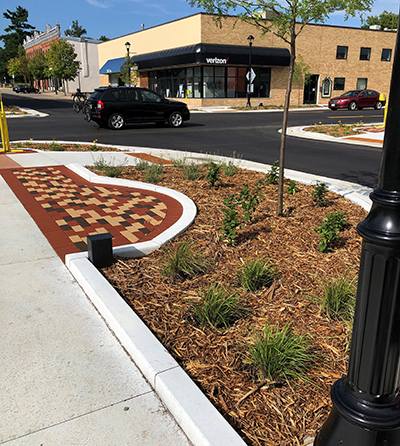
This bump-out with landscaping in Lake City provides a safer and more welcoming experience for people walking as part of the project's Complete Streets approach. District 6 photo |
As discussed in the Nov. 2 issue of Newsline, the new Complete Streets Handbook provides a one-stop-shop for policy procedures. It includes guidance for staff on how to implement a Complete Streets approach and comply with reporting requirements. The handbook can be found on the Complete Streets website and on iHUB.
Staff can attend an upcoming training session to fully understand how the policy update impacts day-to-day responsibilities and increase understanding of the new Complete Streets resources. Save the date for one of the training sessions listed below. To register, go to the MnDOT Learning Center and search for “Complete Streets Policy Training” or course GNRL00082.
- Nov. 29, 1-4:30 p.m. (virtual)
- Dec. 6, 1-4:30 p.m. (in person, MnDOT St. Paul Central Office)
- Dec. 12, 1-4:30 p.m. (in person, MnDOT Shoreview Training Center)
- Dec. 13, 8:30 a.m.-Noon (in person, MnDOT St. Cloud Training Center)
Contact Nissa Tupper, transportation and public health planning director, at Nissa.tupper@state.mn.us, with any questions. |
| |
|

|
 |
TABLE of CONTENTS
 |
Reminder: Mentor and sponsor program open for applications |
By Frida Alvarez, diversity and inclusion organizational development specialist
MnDOT’s mentor and sponsor program is returning in 2023, and applications are open until Nov. 29.
The program helps employees thrive in the workplace by connecting them with more experienced peers to receive guidance and feedback, identify strengths and opportunities, plan professional goals, build a network and just chat. The programs begin in January and last one year.
Full details were included in the Oct. 5 issue of Newsline.
An upcoming session, conducted virtually via Teams, will provide more information for anyone interested in participating in the programs, either as a sponsor/mentor or a mentee.
To apply for the mentor and sponsor program, complete this online application. If you have any questions, please contact Frida Alvarez, diversity and inclusion organizational development specialist. |
| |
|

|
 |
TABLE of CONTENTS
 |
Thank you, veterans! |
By Commissioner Nancy Daubenberger

Check out the Veterans poster at this link. |
This past Friday, Nov. 11, was Veterans Day, an annual federal holiday that honors all who are serving and those who have served in the U.S. military.
MnDOT thanks our veterans for their service to our country and your continued service to Minnesota! We have more than 400 veterans working around the state. We are proud and honored to have you on our staff.
Find many of our veterans on this thank-you poster.
If you are a veteran and would like to join the Veterans Employee Resource Group, contact Luke Charpentier, or learn more about the group on the ERG website.
We are forever grateful for all you've done to maintain America's freedom. Thank you for your bravery and your sacrifice. Happy Veterans Day! |
| |
|
|
|



